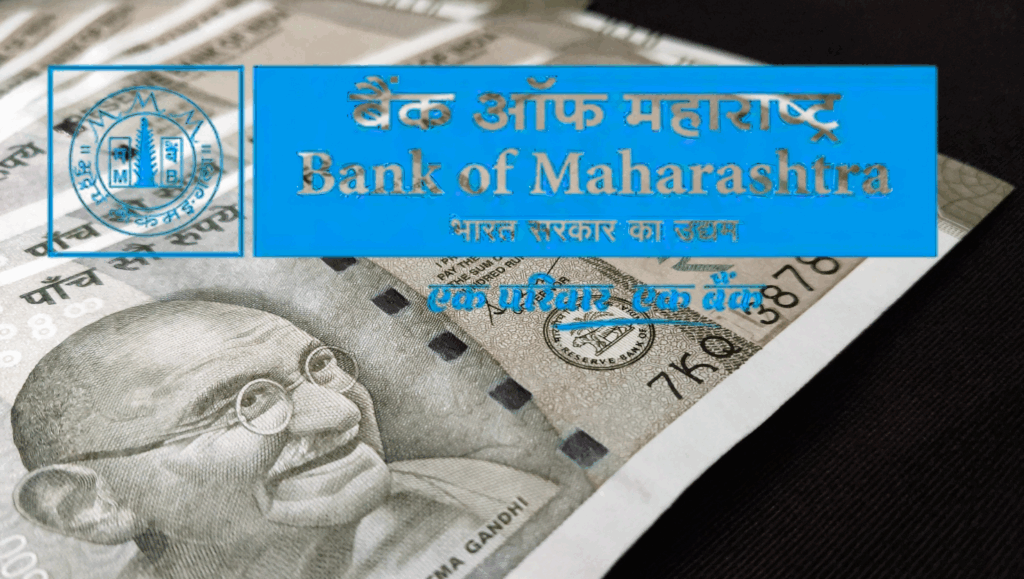
” The Unified Pension Scheme launching April 1, 2025, guaranteeing a ₹10,000 monthly pension for eligible Indians. Learn about eligibility, benefits, and how it compares to existing schemes. Explore its impact on financial security, poverty reduction, and economic growth. Stay informed and prepare for this transformative social security initiative. “
The Indian government has announced a groundbreaking initiative that promises to revolutionize the social security landscape in the country. The Unified Pension Scheme (UPS), set to launch on April 1, 2025, guarantees a monthly pension of ₹10,000 to eligible beneficiaries. This ambitious scheme aims to provide financial stability to millions of citizens, particularly the elderly, farmers, and informal sector workers, who often lack access to structured pension plans.
The Unified Pension Scheme (UPS)
The Unified Pension Scheme (UPS) was announced by the Indian government on August 24, 2024, and is set to be implemented from April 1, 2025. This scheme is designed to replace the existing National Pension System (NPS) for government employees, offering a more stable and predictable pension amount. The UPS aims to benefit approximately 23 lakh Central Government employees initially, with the potential to extend to state government employees as well.
Key Features of the Unified Pension Scheme
The Unified Pension Scheme comes with several noteworthy features that make it a game-changer in India’s pension landscape:
- Guaranteed Pension: One of the most significant features of the UPS is the guaranteed minimum monthly pension of ₹10,000. This ensures that retirees have a stable income, irrespective of market fluctuations.
- Government Contribution: The government will contribute 18.5% of the employee’s basic pay towards the pension fund.
- Assured Pension Amount: Employees with 25 years or more of service will receive 50% of their average basic pay for the last 12 months as their monthly pension.
- Family Pension: In the event of the pensioner’s demise, the family will continue to receive the pension, ensuring financial security for the dependents.
- Universal Coverage: The scheme aims to cover all citizens above a certain age, regardless of their employment status.
- Centralized Administration: The UPS will be managed by a single nodal agency, streamlining the process of enrollment, fund allocation, and disbursement.
- Direct Benefit Transfer (DBT): Pensions will be credited directly to beneficiaries’ bank accounts, reducing delays and leakages.
- Inflation-Indexed Pensions: The pension amount may be adjusted periodically to account for inflation, ensuring that beneficiaries’ purchasing power is maintained.
- Voluntary Contributions: Individuals can opt to make additional contributions to increase their pension amount.
Eligibility Criteria
The UPS is primarily targeted at Central Government employees who joined service after January 1, 2004, and those currently under the NPS. Employees have the option to switch from NPS to UPS, but once the switch is made, it is irreversible. State governments can also adopt the UPS for their employees, with Maharashtra being the first state to implement the scheme.To ensure that the benefits of the Unified Pension Scheme reach the intended beneficiaries, the government has outlined specific eligibility criteria:
- Age Requirement: Applicants must be 60 years or older to qualify for the scheme.
- Income Threshold: The scheme primarily targets individuals with limited or no income, such as farmers, informal sector workers, and low-income earners.
- Citizenship: Only Indian citizens are eligible to enroll in the UPS.
- Bank Account: Beneficiaries must have an active bank account for direct pension transfers.
- Exclusion Criteria: Individuals already receiving pensions under other government schemes may not be eligible for the UPS.
Benefits of the Unified Pension Scheme
The Unified Pension Scheme offers numerous benefits to individuals and society as a whole:
- Financial Security: The guaranteed pension amount provides a safety net for retirees, ensuring they have a stable income to cover their living expenses.
- Predictability: Unlike the NPS, which is market-linked and subject to fluctuations, the UPS offers a predictable pension amount, making financial planning easier for retirees.
- Family Support: The inclusion of a family pension ensures that the dependents of the pensioner are financially secure in the event of the pensioner’s demise.
- Inflation Protection: The inflation adjustment feature ensures that the pension amount retains its value over time, protecting retirees from the eroding effects of inflation.
- Reduced Poverty: By providing a steady income, the scheme aims to lift millions of elderly citizens out of poverty.
- Simplified Process: The centralized administration reduces bureaucratic hurdles, making it easier for beneficiaries to access their pensions.
- Economic Growth: Increased disposable income among pensioners can boost demand for goods and services, stimulating economic growth.
- Social Empowerment: The scheme promotes dignity and independence among the elderly, enhancing their quality of life.
Impact on Government Employees
The introduction of the UPS is expected to have a profound impact on the financial well-being of government employees. The guaranteed pension amount provides a sense of security and stability, allowing retirees to plan their finances better. The inclusion of family pension and inflation adjustment further enhances the scheme’s attractiveness, making it a comprehensive solution for post-retirement financial planning.
How Does the UPS Compare to Existing Pension Schemes?
India currently has several pension schemes, such as the National Pension System (NPS), Atal Pension Yojana (APY), and Employee Provident Fund (EPF). Here’s how the Unified Pension Scheme stands out:
| Feature | Unified Pension Scheme (UPS) | National Pension System (NPS) | Atal Pension Yojana (APY) | Employee Provident Fund (EPF) |
| Pension Amount | ₹10,000 (guaranteed) | Depends on contributions and market returns | ₹1,000–₹5,000 (based on chosen plan) | Lump sum amount based on contributions |
| Coverage | Universal (all citizens aged 60+) | Open to all (18–65 years) | Open to all (18–40 years) | Limited to salaried employees |
| Eligibility | Age 60+ with limited or no income | Age 18–65 | Age 18–40 | Salaried employees in organized sector |
| Contribution | Voluntary (optional top-ups) | Mandatory for subscribers | Mandatory for subscribers | Mandatory for employees and employers |
| Administration | Centralized (single nodal agency) | Decentralized (PFRDA-regulated) | Decentralized (PFRDA-regulated) | Decentralized (EPFO-managed) |
| Payout Mode | Monthly pension (₹10,000 fixed) | Lump sum or periodic withdrawals | Monthly pension (based on plan) | Lump sum at retirement |
| Inflation Protection | Yes (periodic adjustments) | No (market-linked returns) | No (fixed pension amounts) | No (fixed interest rates) |
| Target Audience | Elderly, farmers, informal workers | General public (voluntary enrollment) | Low-income groups (voluntary enrollment) | Organized sector employees |
| Government Support | Fully funded by the government | Co-contribution for NPS Lite subscribers | Co-contribution for APY subscribers | Employer and employee contributions |
| Flexibility | Fixed pension, no investment risk | Flexible contributions, market-linked | Fixed contributions, fixed pension | Fixed contributions, fixed returns |
Key Takeaways:
- The Unified Pension Scheme (UPS) stands out for its guaranteed monthly pension of ₹10,000, making it a reliable option for elderly citizens with limited income.
- Unlike the NPS and APY, which require mandatory contributions and are market-linked, the UPS offers a fixed payout without investment risks.
- The EPF is limited to salaried employees, while the UPS aims for universal coverage, benefiting farmers, informal workers, and low-income groups.
- The UPS’s centralized administration and inflation-indexed pensions ensure efficient delivery and long-term financial security for beneficiaries.
This comparison highlights how the UPS addresses gaps in existing pension schemes, offering a more inclusive and secure retirement solution for millions of Indians.
Transition from NPS to UPS
Employees currently under the NPS have the option to switch to the UPS. The transition process involves the following steps:
- Application: Employees need to submit an application to their respective departments expressing their intent to switch to the UPS.
- Verification: The department will verify the employee’s eligibility and service records.
- Approval: Once verified, the application will be approved, and the employee will be transitioned to the UPS.
- Finality: The switch from NPS to UPS is final and cannot be reversed.
Potential Challenges and Solutions
While the Unified Pension Scheme is a commendable initiative, it is not without challenges:
- Funding: The scheme’s success depends on adequate funding from the government. To address this, the government may explore public-private partnerships or allocate a portion of tax revenues.
- Awareness: Many eligible individuals may not be aware of the scheme. The government must launch extensive awareness campaigns to ensure maximum enrollment.
- Implementation: Coordinating between central and state governments can be complex. A robust digital infrastructure can help streamline the process.
- Fraud Prevention: Strict verification processes are needed to prevent fraudulent claims and ensure that benefits reach genuine beneficiaries.
Impact on India’s Economy and Society
The Unified Pension Scheme has the potential to bring about transformative changes in India:
- Reduced Income Inequality: By providing financial support to low-income groups, the scheme can help bridge the income gap.
- Increased Savings: A guaranteed pension may encourage individuals to save more, leading to higher investment rates.
- Improved Healthcare: With a steady income, elderly citizens can afford better healthcare, reducing the burden on public health systems.
- Social Stability: Financial security can reduce stress and improve mental health among the elderly, fostering social harmony.
How to Prepare for the Launch of the UPS
With the Unified Pension Scheme set to launch on April 1, 2025, here’s how you can prepare:
- Check Eligibility: Review the eligibility criteria to determine if you qualify for the scheme.
- Open a Bank Account: Ensure you have an active bank account for direct pension transfers.
- Gather Documents: Keep necessary documents, such as proof of age and citizenship, ready for the enrollment process.
- Stay Informed: Follow official government announcements to stay updated on the scheme’s rollout.
- Plan Financially: If you’re close to retirement, consider how the ₹10,000 pension will fit into your overall financial plan.
The Unified Pension Scheme (UPS), launching on April 1, 2025, is a landmark initiative that promises to transform India’s social security framework. By guaranteeing a monthly pension of ₹10,000, the scheme aims to provide financial stability and dignity to millions of elderly citizens.
As the government works towards implementing this ambitious program, it is crucial for eligible individuals to stay informed and prepare for enrollment. The UPS not only addresses the immediate financial needs of the elderly but also contributes to long-term economic growth and social stability.
By prioritizing inclusivity and efficiency, the Unified Pension Scheme sets a new benchmark for social security programs worldwide. As we count down to its launch, let’s embrace this opportunity to build a more secure and equitable future for all.
Frequently Asked Questions (FAQs)
- What is the Unified Pension Scheme (UPS)? The UPS is a new pension scheme introduced by the Indian government to provide a guaranteed minimum monthly pension of ₹10,000 to government employees post-retirement.
- Who is eligible for the UPS? Central Government employees who joined service after January 1, 2004, and those currently under the NPS are eligible for the UPS.
- Can state government employees opt for the UPS? Yes, state governments can adopt the UPS for their employees. Maharashtra is the first state to implement the scheme.
- What is the government contribution under the UPS? The government will contribute 18.5% of the employee’s basic pay towards the pension fund.
- Is the pension amount adjusted for inflation? Yes, the pension amount will be adjusted for inflation to maintain its value over time.
- Can employees switch back to NPS after opting for UPS? No, once an employee switches from NPS to UPS, the decision is final and cannot be reversed.
-
Indian Stock Market Trends: Monday Morning Briefing
Nifty 26,200 is just the start—8.2% GDP growth has ignited a fresh bull run, but a new 50%






























